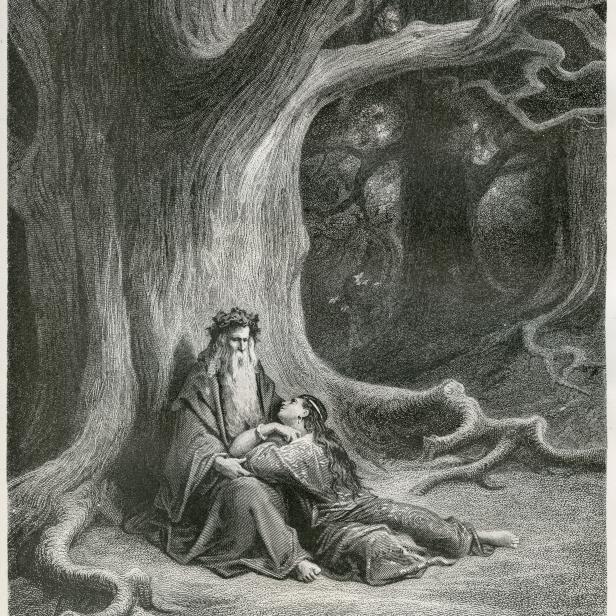
THEPALMER
We Just Found One of the Earliest Fragments of the Merlin Legend, with a New Take
In a library in the UK, research librarians stumbled upon one of the oldest known manuscripts detailing the legend of Merlin. Translated from Old French, the accidentally discovered text offers a slightly augmented take on a typically risqué Arthurian legend.
In 2019, a librarian in Bristol was examining a 15th-century French philosophy book when he found handwriting within the book’s binding. This isn’t particularly odd, given that ancient books were often recycled into new ones. But most of those had been prayer books in Latin. This was in Old French, and the librarian could distinctly make out the words “Merlin” and “Arthur.”
These fragments have become known as the “Bristol Merlin,” which literary scholars have determined is one of the oldest examples of Arthurian legend committed to parchment. These are the classic stories that tell the tale of King Arthur and his Wizard advisor, Merlin. They’re a bit like the Marvel Universe, as one scholar put it: they take place in a fictional world with a set of well-known characters who appeared and interacted in different stories.
This particular text contains a story from a series of legends scholars called the “Vulgate Cycle,” which was originally written sometime around 1220. Based on a careful analysis of the handwriting and language used, the fragment seems to have been written somewhere in Northern France not long after the original.

Sergei Vesnin / EyeEm
Northern France
The Bristol Merlin is different from known versions of the Vulgate cycle in one big way: it’s the most kid-friendly take on the story discovered so far. These fragments tell the tale of Merlin’s encounter with the enchantress Viviane — also known as Lady of the Lake — who casts a spell that engraves three words on a ring that prevents men from speaking to her. The known versions found in other texts are much saucier. That is, instead of engravings, they’re tattoos, and instead of a ring, they’re on...well, you get the picture.
This is just one of more than 200 known medieval texts containing the Vulgate cycle, and each one offers a slightly different take on the stories. That’s because in an age before printing presses, books were reproduced by handwriting. Because of this, it’s common to have slight variations introduced by the scribe making a particular copy. In this case, the scribe may have just wanted the story to be a little more PG.
Considering that most of us got our first Arthurian legend from Disney? Well, things sure have changed.
For more on this topic, listen to the Curiosity Daily Podcast
Discovery's award-winning Curiosity Daily podcast will help you get smarter about the world around you — every day. In less than 10 minutes, you’ll get a unique mix of research-based life hacks, the latest science and technology news, and more.


















